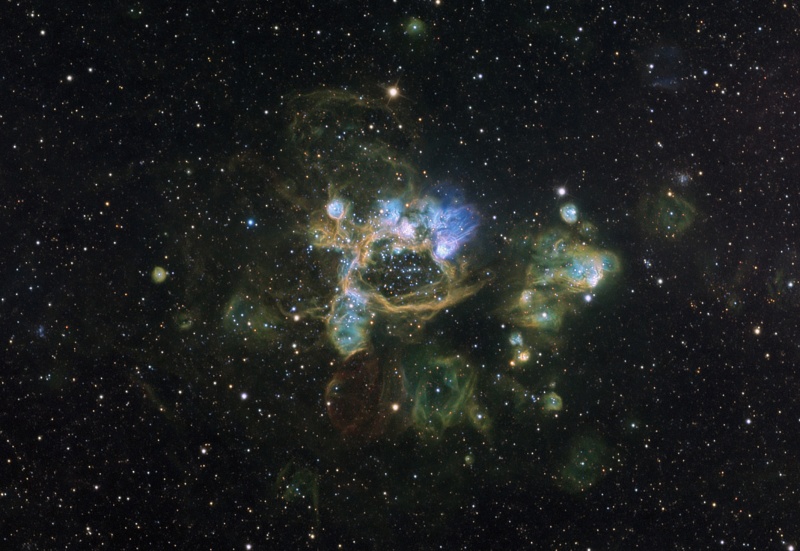Credit & Copyright: Don Goldman,
Macedon Ranges Observatory
Explanation:
A truly giant complex of
emission
nebulae, N44 is about 1,000 light-years across.
It shines in southern skies as a denizen of our neighboring galaxy,
the Large Magellanic Cloud, 170,000
light-years away.
Winds and intense radiation from hot,
young, luminous stars in N44 excite and sculpt filaments
and streamers of the
glowing nebular gas.
But supernovae -
the death explosions of the massive short lived
stars - have also likely contributed to the region's enormous,
blown-out shapes.
The cluster of young stars seen near the center lies in
a superbubble nearly 250 light-years across.
This detailed, false-color view of the
intricate structures
codes emission from hydrogen, oxygen, and sulfur in shades
of blue and green.
1999 2000 2001 2002 2003 2004 2005 2006 2007 2008 2009 2010 2011 2012 2013 2014 2015 2016 2017 2018 2019 2020 2021 2022 2023 2024 2025 |
Январь Февраль Март Апрель Май Июнь Июль Август Сентябрь Октябрь Ноябрь Декабрь |
NASA Web Site Statements, Warnings, and Disclaimers
NASA Official: Jay Norris. Specific rights apply.
A service of: LHEA at NASA / GSFC
& Michigan Tech. U.
|
Публикации с ключевыми словами:
LMC - emission nebula - БМО - эмиссионная туманность
Публикации со словами: LMC - emission nebula - БМО - эмиссионная туманность | |
См. также:
Все публикации на ту же тему >> | |
